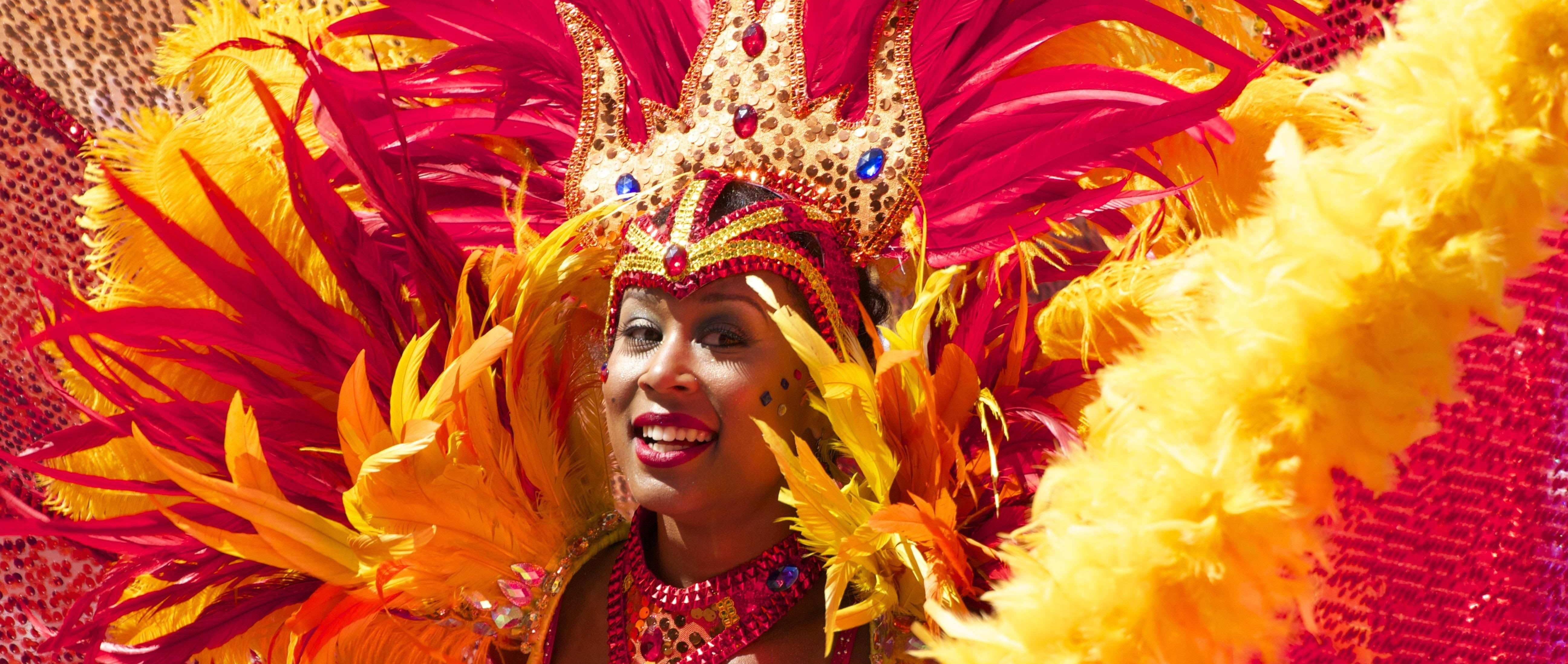Around the World: How To Celebrate Carnival, Shrove Tuesday, or Lent
What do Pancake Day, Ash Wednesday, Lent, Mardi Gras, and Carnival have in common? Lent. Confused? We'll explain. Let's take a closer look at how you can celebrate the season.
- Education
- International News

Pancake Day, Ash Wednesday, and Lent are all related, believe it or not. Their commonality? They all have to finish on Mardi Gras, or Shrove Tuesday.
Confused? Let us explain.
The day after Mardi Gras is Ash Wednesday, the first day of Lent. For Christians, Lent marks the beginning of a six-week partial fast leading up to Easter. Ash Wednesday is the day that Christians use to “cleanse” their souls before Lent. And because the Lenten period is, traditionally, a time of self-discipline and deprivation, Mardi Gras, or Fat Tuesday, allows Christians a final chance to indulge in everything they're about to give up for forty long days.
Mardi Gras and Shrove Tuesday are the same thing. So where do the pancakes come into the celebration? It's an old practice going back to when things like eggs, butter, sugar, and cream were luxury items. Devout Christians would prepare for the fast of Lent by emptying their cupboards of any temptations, and what better way to do so than with - you guessed it - pancakes! Which is why, in the UK and other English-speaking countries, the Tuesday before Lent is often known as Pancake Day. Of course, pancakes aren't the only treats you can make with these ingredients. You'll find fatty pastries like paczkis, fastelavnsboller, semlor, malasada, flaouna, and galani served in pre-Lent festivals around the world. Let’s take a closer look at how to celebrate all of these festivals.
1. In New Orleans: the 300th Anniversary of Mardi Gras
2018 marks the 300th anniversary of Mardi Gras, the last bash before Lent. Rooted in the seventeenth- and eighteenth-century traditions of Europe’s House of Bourbon, Mardi Gras was formerly a festival for the privileged classes. Today, it’s accessible to anyone willing to trek to New Orleans.
Anything goes. Wear what suits you and bring a bag for the motley assortment of beads, cups, and other tchotchkes tossed in your directions from all the floats.
2. Pick a great Carnival parade
The choices are vast—and they’re all incredible:
Belgium’s Carnival of Binche started some curious traditions of throwing oranges for good luck, and wearing large, feathery hats.
Bolivia hosts the Carnival of Oruro, an indigenous celebration that celebrates the triumph of good over evil. A combination of folklore, legend, and myth, this Carnival will leave you spellbound.
Among the world’s most popular Carnival celebrations is Rio’s, dating back to 1723 and drawing over two million people per day. Enjoy lavish parades amid the reverberations of Samba music that have the whole city hopping.
Caribbean
If you want to experience Carnival with a more Caribbean feel, check out the Trinidad and Tobago Carnival. Get into your costume, enjoy savory street food, and tap your feet to the rhythmic steel pan bands.
In Nice, France, you’ll find six parades, and international dancers and musicians. Catch a bouquet from any of the flower-covered floats.
Cologne, Germany hosts another Carnival, with a march through the southern part of the city and elaborate floats.
Head out to the streets and canals of Venice at the Carnival of Venice, known for its porcelain masks. Legend has it that revelers first wore the porcelain masks as a revolt against class hierarchy—as far back as the thirteenth century.
Also in Europe, Copenhagen’s Carnival is a newcomer, but a rapidly-growing one. Started in 1982, Copenhagen Carnival boasts excesses of 100,000 spectators over three days of parades, music, and general merry-making.
In Tenerife’s Canary Islands, locals host the second most popular Carnival after Rio, the Carnival of Santa Cruz de Tenerife. The city parties for 15 days to elect the Carnival queen.
Not too far away, you’ll find Fasnacht in Basel, Switzerland. Masks, carnival music, and random bar hopping, singing, and dancing abound.
London’s Notting Hill hosts the UK’s Carnival event with calypso, soca, reggae, and dub. Immerse yourself in the heart of Caribbean culture in London’s streets.
3. Eat pancakes if you don’t like costumes
If you’re not into the rich party scene and debauchery of Carnival, celebrate Shrove Tuesday by immersing yourself in pancakes.
It started because Shrove Tuesday was traditionally the last opportunity to use up eggs and other fats before fasting for Lent.
Eggs and other fats? Enter the pancake. Featured in cookbooks as far back as the 15th century, pancakes symbolize the entry into Lent—a last pass at rich food until Easter.
4. Mix religions for celebrations in Goa, India
For a truly unique experience, try the Goa Carnival, first introduced by the Portuguese settlers who ruled the area for 500 years. Goa’s Carnival features fortune tellers, hawkers, men, and women, all dressed to the nines in beautiful costumes. The culminating red and black dance will wow you, as will the food and other festivities.
However you celebrate—carnival, Mardi Gras, pancakes, or none of the above, enjoy the season.
Find a program in these categories


